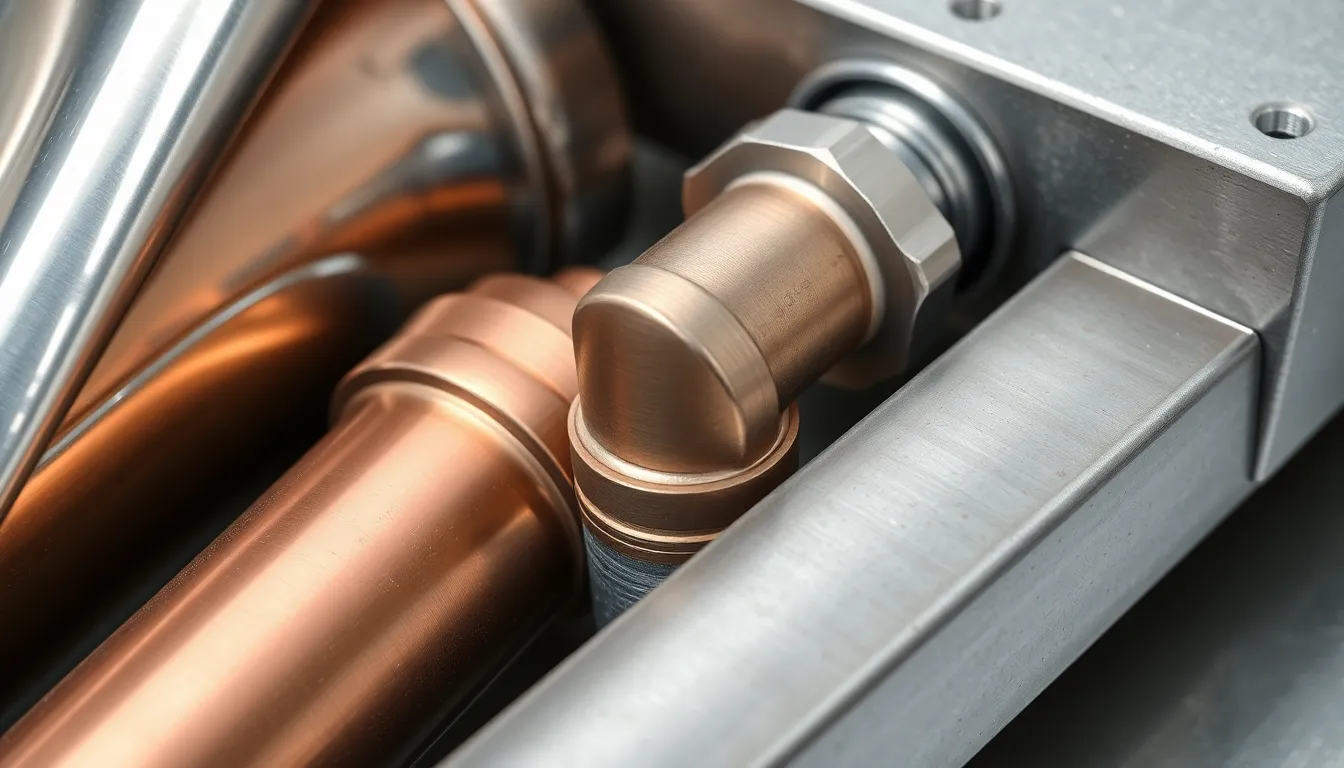In the culinary world, presentation is just as important as flavor. Plating techniques transform a simple dish into a work of art, captivating diners before they even take a bite. Chefs have long understood that the visual appeal of food can elevate the dining experience, making it memorable and inviting.
From the elegant swoosh of a sauce to the careful arrangement of ingredients, mastering plating techniques can set a dish apart. Whether it’s fine dining or home cooking, these skills can enhance creativity and showcase culinary talent. As chefs explore various styles and trends, they discover how to balance aesthetics with taste, creating dishes that are as beautiful as they are delicious.
Table of Contents
ToggleOverview of Plating Techniques
Plating techniques play a crucial role in elevating a dish’s visual appeal. Various methods exist to enhance presentation, including the following:
- Symmetry: Arranging food items in a balanced manner creates a structured look. This technique emphasizes harmony and order on the plate.
- Layering: Layering ingredients adds depth and dimension. Chefs stack components to create height, making the dish more visually intriguing.
- Focal Point: Identifying a focal point draws attention to the most important element of the dish. Placing the main ingredient prominently enhances its significance.
- Color Contrast: Utilizing vibrant colors enhances visual interest. Contrasting colors can attract the eye and make the dish more appetizing.
- Sauce Drizzling: Artfully drizzling sauces introduces dynamic visual elements. Chefs can use techniques like splotching or swirling to add flair.
- Garnishing: Adding edible garnishes provides texture and color. Fresh herbs, microgreens, or edible flowers can elevate the overall aesthetic and flavor.
- Negative Space: Incorporating empty space on the plate allows the dish to breathe. Negative space highlights key elements and avoids clutter.
Mastering these plating techniques can significantly impact both fine dining and home cooking, ensuring dishes not only taste exceptional but also look stunning. Implementing these methods allows chefs to creatively express their skills while enhancing the overall dining experience.
Types of Plating Techniques

Plating techniques vary significantly in application and purpose, each contributing uniquely to the appearance and functionality of materials. Understanding these techniques enhances knowledge in manufacturing and design.
Electrodeposition
Electrodeposition involves using an electric current to deposit a metal coating onto a substrate. This technique is prevalent in industries requiring corrosion resistance or enhanced conductivity. It allows uniform thickness over complex shapes. Common applications include automotive parts, electronics, and jewelry. Electrodeposition provides a smooth finish, improving the aesthetic and protective qualities of the surfaces.
Electroless Plating
Electroless plating, unlike electrodeposition, does not rely on an external electrical source. This technique uses chemical reduction to deposit metal coatings on surfaces. It ensures an even layer regardless of the substrate’s shape. Commonly used metals include nickel and copper, often in applications such as circuit boards and plumbing fixtures. Electroless plating enhances adhesion and corrosion resistance, making it suitable for various industries.
Hot-Dip Galvanizing
Hot-dip galvanizing involves dipping steel or iron into molten zinc. This method provides robust corrosion protection by creating a lasting bond between zinc and the base metal. It is widely used for outdoor structures, like fences, bridges, and buildings. Hot-dip galvanizing ensures complete coverage, even in hard-to-reach areas. It promotes durability and reduces maintenance costs in harsh environments.
Applications of Plating Techniques
Plating techniques find extensive applications across various industries, enhancing both functionality and aesthetic appeal. These techniques serve crucial roles in automotive, electronics, and decorative contexts.
Automotive Industry
In the automotive industry, plating techniques like electrodeposition ensure components resist corrosion, improve durability, and enhance appearance. This method applies a thin layer of metal onto parts such as brakes, wheels, and engines, effectively protecting against environmental elements. Additionally, plating enhances conductivity, making it vital for electrical contacts and connectors within vehicles. Manufacturers often rely on these techniques to meet safety and performance standards, ensuring longevity and reliability.
Electronics
Electronics heavily utilize electroless plating for uniform metal coatings on circuit boards and components. This technique does not require an external power source, allowing even coverage on complex geometries. By applying a layer of nickel or gold, electroless plating enhances conductivity and prevents oxidation, crucial for maintaining optimal electronic performance. Furthermore, manufacturers use this process for connectors and semiconductor devices, ensuring high-quality and durable production in the electronics sector.
Decorative Use
In decorative applications, plating techniques add visual appeal and value to various products. Gold plating, for example, transforms jewelry, awards, and decorative items by providing a lustrous finish that attracts consumers. This technique not only enhances aesthetics but also prevents tarnishing, prolonging the item’s life. Coating applications extend to household items, furniture accents, and luxury goods, where visual impact and durability contribute significantly to marketability and consumer interest.
Advantages and Disadvantages of Plating Techniques
Plating techniques offer various benefits and limitations across culinary and industrial applications. Understanding these aspects aids in making informed decisions regarding their use.
Benefits
- Enhanced Visual Appeal: Plating techniques improve the presentation of dishes, making them more attractive to consumers. Eye-catching aesthetics can enhance the overall dining experience and stimulate appetite.
- Creative Expression: These techniques allow chefs to showcase their creativity, turning simple dishes into works of art. They can express individual style and culinary philosophy through plating.
- Increased Marketability: In the culinary field, visually appealing dishes can attract customers and boost sales. Similarly, decorative plating techniques like gold plating enhance products, improving their marketability in retail.
- Customization: Plating techniques enable personalization, catering to unique preferences and dietary needs. Chefs can adjust presentations based on themes, seasons, or special occasions.
- Improved Culinary Techniques: Mastering plating techniques often leads to better overall cooking skills. Chefs learn to think critically about flavor combinations and ingredient pairings during the plating process.
Limitations
- Time-Consuming: Implementing intricate plating techniques can require significant time and skill. In busy restaurant environments, this may lead to delays in service, impacting overall efficiency.
- Material Costs: Some plating techniques involve expensive materials or specialized tools, increasing overall operational costs. Chefs and manufacturers need to consider these expenses when incorporating advanced plating.
- Skill Dependency: Mastering plating techniques demands a high level of skill and practice, which may not be accessible to all culinary professionals. Inconsistent skill levels can lead to varied results, impacting overall presentation quality.
- Potential Distraction: Highly elaborate plating may distract from the dish’s flavor and quality. Customers might focus on aesthetics rather than the taste, which can lead to disappointment.
- Limited Applicability: Some techniques may not suit every dish or cuisine. Inappropriately applied plating methods can undermine a dish’s integrity and authenticity, detracting from its cultural significance.
Plating techniques play a crucial role in the culinary and industrial worlds. They not only enhance the visual appeal of dishes but also serve functional purposes in various industries. By mastering these techniques, chefs and manufacturers alike can elevate their creations, making them more memorable and marketable.
The balance of aesthetics and flavor is essential for a fulfilling dining experience. Understanding the advantages and limitations of different plating methods allows for informed choices that can significantly impact the final product. Whether in a restaurant or a manufacturing setting, effective plating techniques are invaluable tools for creativity and expression.



